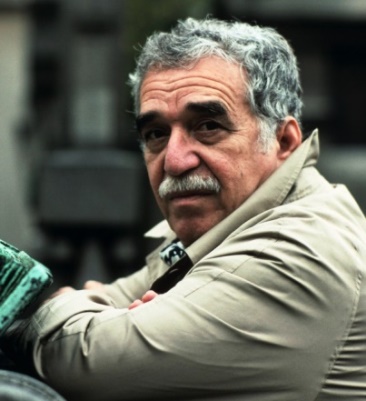García Márquez once said, "I want to be remembered as a journalist, not as the author of One Hundred Years of Solitude or the Nobel Laureate." ”
Recently, the Chinese edition of his 40-year journalistic career collection "Back to the Seed" was launched in China for the first time. The book contains fifty essays by García Márquez and is a collection of non-fiction works with personal characteristics. The content includes news reports and anecdotes that are more bizarre than fictional plots; the prototype of the work of "One Hundred Years of Solitude"; the creation story of "Love in the Time of Cholera"; early column articles, social commentary, interview features, and so on.

Famous writer García Márquez
When the young García Márquez was admitted to the law department of the National University of Colombia to fulfill his father's wishes, he was not interested in the course, and he had no idea about his future, so he could only spend his time on literature, especially poetry. He spent his afternoons on the city tram every Sunday reading poems; he recited poems one by one with friends in the school café, far more than he spent in the classroom; occasionally he would write articles, and when he came out, he decided that he wanted to be a writer and make a living in journalism and literature all his life.
At that time, he could not imagine how his wishes would be met: he had been a journalist for forty years, witnessing almost every major moment of his life, which he called "the best profession in the world"; and his writing career began until he reached the pinnacle of his writer's achievements, winning the Nobel Prize in Literature.
Back to the Seeds is a collection of García Márquez's most iconic and narratively tense non-fiction works from each period, and see how he uses his magic to turn any subject matter into a good story!
The president seems to be so busy that he still has time to meticulously straighten out his appearance, and who is the name of the barber who is qualified to scratch his neck with a blade? See The President's Barber for details;
It is rumored that death has given someone a preview of his death three years in advance, can she go to the appointment as scheduled? See "Death is a very unpunctual woman";
The draft/notes of the creation of "One Hundred Years of Solitude" were disclosed for the first time, and I want to see how hard it took to rewrite the winner of the "Uncontroversial" Nobel Prize in Literature? See "Buendia's House" for details;
How bizarre is the serial coverage from Rome? The death of Vilma, a 19-year-old girl who caused an uproar in Italy, led to an astonishing chain of drug consumption, involving a number of aristocratic high-ranking officials, and the truth is still foggy - see "Scandal of the Century" for details...
The fifty essays in the book are rich in themes and vary in size, but they all reflect Márquez's unique writing style. These easy-to-read works, not simply written for literature, have become truly non-fictional works that transcend time.
"My mother asked me to accompany her to sell the house." In Márquez's only autobiography, Living to Tell, his literary life, and everything that follows, stems from a trip back to his hometown: he had just dropped out of college, had no permanent residence, was hungry, was in debt, and lived by occasionally writing for newspapers and magazines. Nearly forty years later, Márquez once again embarked on the "Journey back to the Seed", walking on the dusty paths of Arakataca, drawing nourishment from this "poetic source", and by this time he was a world-renowned writer and journalist.
The life and creation of the Nobel prize winner Márquez have the same "seed", from the seed of his hometown life, from the seed of non-fiction writing, the most amazing literary fruits. "Back to the Seed" integrates these two "seeds" and witnesses García Márquez's forty-year growth path with fifty wonderful masterpieces, constituting a work that goes back to the origin and returns to the heart.
"Sometimes, real life is much scarier than the story. It's better to suggest to real life that it's better to be cautious. García Malkistan frankly admits that on the path of magic, his world has never gone further than reality. He put the intricate world into his pen, starting from his hometown, from observing the things around him, starting with non-fiction writing.
Open the book and go back to the seeds with Márquez, to the source of life and creation.
Written by: Nandu reporter Huang Qian